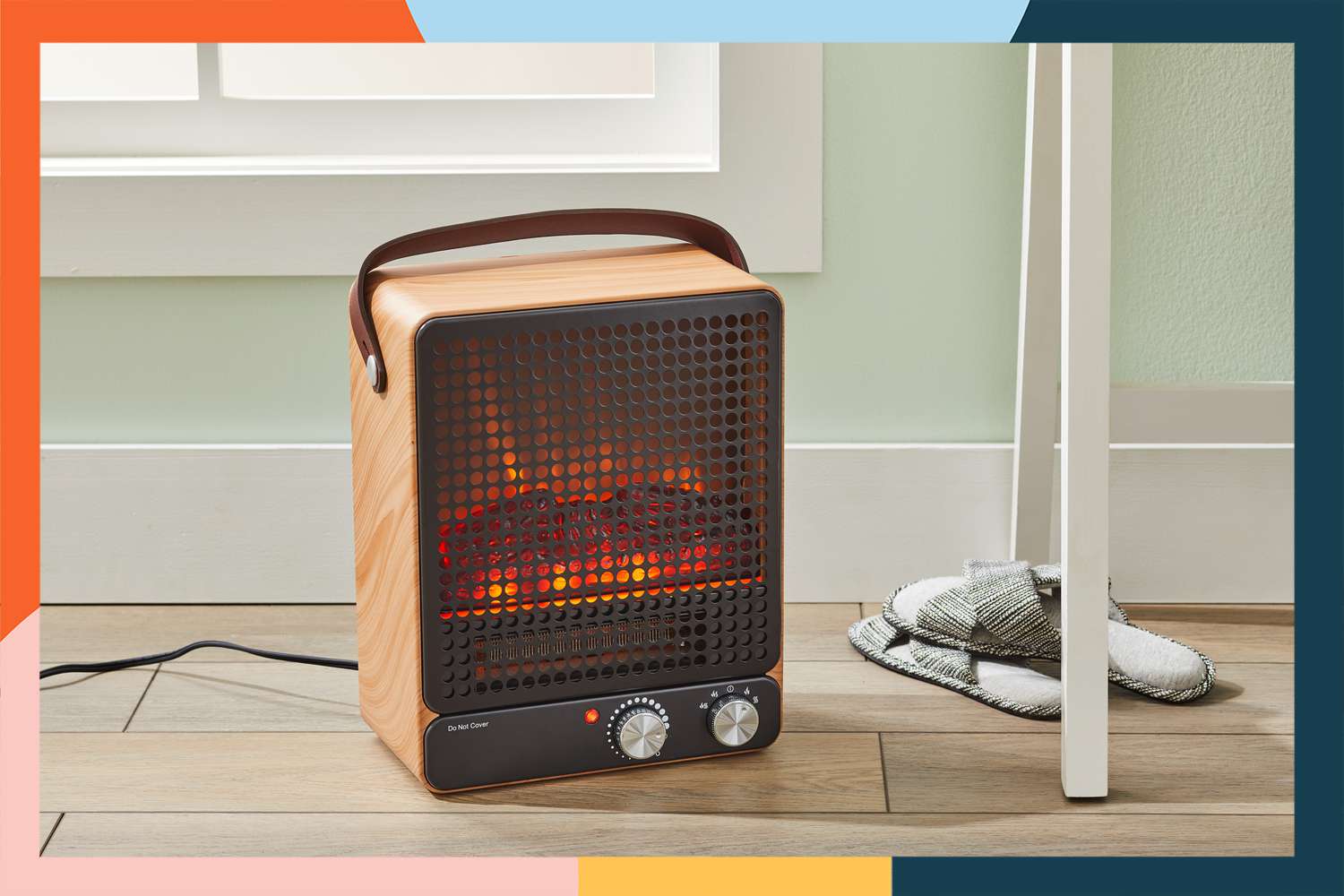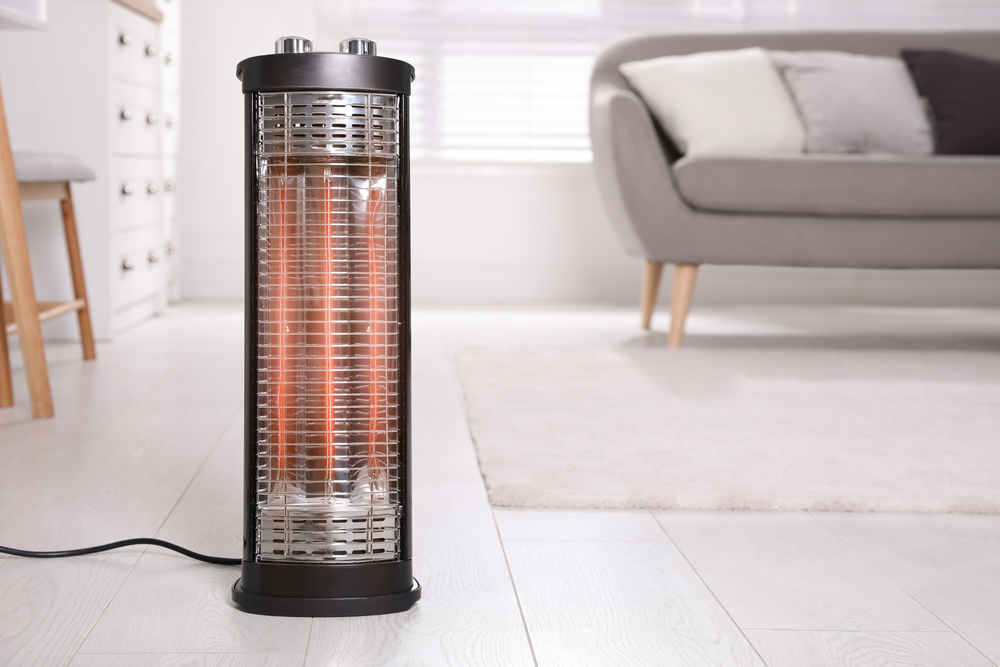Infrared heaters are the cheapest to run as they use minimal electricity for efficient heat generation. These heaters are also safe and emit no harmful radiation, making them cost-effective and energy-efficient sources of warmth.
When looking for an economical heating option, understanding which type of heater is the cheapest to run can help save money on utility bills. Infrared heaters stand out as the most cost-effective choice, requiring minimal electricity for effective heat output.
Not only are they energy-efficient, but they also provide a safe and comfortable heating experience without emitting any harmful radiation. Let’s delve into why infrared heaters are an excellent option for those seeking a budget-friendly and eco-conscious heating solution.

Understanding Electric Heaters
An electric heater is a cost-effective heating solution for many homes, offering efficient warmth at an affordable price. Understanding the different types of electric heaters available can help you choose the most economical option for your needs.
Introduction To Electric Heaters
Electric heaters are popular for their simplicity and effectiveness in providing warmth. They are easy to install and use, making them a convenient choice for heating small to medium-sized spaces.
Different Types Of Electric Heaters
- Infrared Heaters: Known for their energy efficiency and ability to produce focused heat.
- Ceramic Heaters: These heaters use ceramic elements to provide consistent and even heat distribution.
- Oil-Filled Heaters: Efficient in retaining heat and suitable for long-term use.
- Space Heaters: Compact and portable heaters ideal for heating specific areas.
- Fan Heaters: Utilize a fan to distribute heat quickly and evenly.
Each type of electric heater has its unique features and benefits, influencing its cost-effectiveness and energy efficiency. By understanding the differences between these heaters, you can make an informed decision on the most economical option for your heating needs.
:max_bytes(150000):strip_icc()/swimming-pools-costs-vs-longterm-value-892a806adde1483999a42fd85acb148c.jpg)
Credit: www.investopedia.com
Comparing Energy Efficiency
When it comes to Comparing Energy Efficiency of heaters, understanding the different types and their cost to run is crucial for making an informed decision.
Infrared Heaters
Infrared heaters are efficient, using little electricity for ample heat without emitting harmful radiation.
Oil-filled Heaters
Oil-filled heaters are another efficient option that provides consistent heat with low electricity consumption.
Halogen Heaters
Halogen heaters are a cost-effective choice due to their low power rating and focused heat emission.
Cost-effective Heating Options
Looking to heat your space economically? Infrared heaters are the cheapest to run, with minimal electricity usage and ample heat production. Oil-filled heaters are also efficient, while halogen heaters offer low-cost power in comparison to other electric models. These options focus on heating you directly, saving energy and expense.
Heating a room efficiently on a budget may seem challenging, but there are several cost-effective options to consider. From electric heaters to propane-based systems, understanding the cheapest ways to heat a room and the factors affecting running costs can help in making an informed decision for a comfortable and economical heating solution.Cheapest Ways To Heat A Room
When it comes to heating a room affordably, several options stand out. The table below provides a comparative overview of the typical running costs for various heating options.| Heating Option | Running Cost |
|---|---|
| Electric Space Heater | $$ |
| Ceramic Heater | $$ |
| Infrared Heater | $ |
| Propane Heater | $$ |
Factors Affecting Running Costs
The running costs of heating systems are influenced by various factors, including the energy source, insulation, and the heating duration. For instance, the insulation of a room can significantly impact the heat retention, affecting the amount of energy required to maintain a comfortable temperature. Furthermore, the type of heater and its energy efficiency play a crucial role in determining the operating expenses. Comparing Propane and Electric Heaters When comparing propane and electric heaters, it’s vital to consider their respective pros and cons from a cost perspective. While propane heaters may require upfront investment for installation, they usually have lower running costs. On the other hand, electric heaters are simpler to install and maintain, but their operational expenses might be relatively higher, depending on the local electricity rates and the efficiency of the unit. In conclusion, understanding the cost-effective heating options and the factors influencing running costs can empower homeowners to make informed choices that align with their heating needs and budget constraints. By examining the key considerations and comparing the costs of different heating solutions, individuals can maximize comfort while minimizing expenses. Remember, the cheapest way to heat a room might not be the same for every household. Conducting a thorough evaluation of the available options and assessing individual heating requirements can lead to an economical and efficient heating solution tailored to specific needs.`
Credit: www.electricrate.com
Practical Considerations
Among various heaters, infrared heaters and oil-filled heaters are the most cost-effective options, consuming minimal electricity while providing ample heat. Halogen heaters stand out for their energy efficiency, focusing heat on individuals rather than entire rooms, making them an economical choice for saving electricity.
Safety-related Considerations
When choosing a heater, it is crucial to consider safety-related factors to ensure the well-being of your household. Here are some key points to keep in mind:- Look for heaters with built-in safety features such as tip-over and overheat protection. These mechanisms will automatically shut off the heater if it gets knocked over or exceeds a certain temperature, reducing the risk of accidents and fire hazards.
- Opt for heaters with cool-to-touch exteriors to prevent burns, especially if you have children or pets at home.
- Avoid using space heaters in rooms with flammable materials or near curtains, bedding, or furniture that can potentially catch fire.
- Ensure proper ventilation when using fuel-based heaters like propane or kerosene heaters to prevent the buildup of carbon monoxide gases.
Noise And Maintenance Factors
Considering noise levels and maintenance requirements of different heater types can greatly impact your overall heating experience. Here’s what to take into account:- Some heaters, such as fan heaters or convection heaters, may generate more noise than others. If you prefer a quieter environment, look for heaters specifically designed to operate silently.
- Oil-filled heaters are known for their quiet operation since they don’t use fans or blowers.
- Regular maintenance is essential to keep your heater running efficiently and safely. Check the manufacturer’s instructions for proper cleaning and upkeep.
- Infrared heaters, with their simple design and absence of moving parts, generally require minimal maintenance compared to other types.
User Recommendations And Reviews
Looking for the cheapest heater to run? Infrared heaters and oil-filled heaters are the most energy-efficient options. They use minimal electricity and provide ample heat, making them cost-effective choices for heating your space. Consider halogen heaters as they have a low power rating, focusing heat on you and saving energy.
Community Opinions
When it comes to determining the cheapest type of heater to run, it’s always helpful to hear from others who have first-hand experience. We’ve gathered user recommendations and reviews to give you insights into what community members have found to be the most cost-effective heating options.
Successful Heating Strategies
1. Infrared Heater: Many users have recommended infrared heaters as the cheapest option to run. These heaters are highly efficient and consume minimal electricity while providing ample heat. Plus, they are safe to use as they do not emit harmful radiation.
2. Oil-Filled Heater: Another energy-efficient option that users have found effective is oil-filled heaters. These heaters use low amounts of electricity and provide consistent heat, making them a cost-effective choice.
3. Halogen Heater: Users have reported that halogen heaters are one of the most economical heating options available. These heaters have a low power rating, ensuring that they don’t waste energy heating the entire room. Their heat is focused on the user, resulting in significant energy savings.
4. Ceramic Heater: Ceramic heaters have also received positive feedback from users, thanks to their energy-efficient performance. These heaters provide quick and even heat distribution, allowing users to warm up a room without consuming excessive electricity.
5. Convector Heater: Several users have found convector heaters to be a cost-effective choice. These heaters work by circulating air through heating elements, ensuring efficient heat distribution throughout the room. They are also relatively inexpensive to purchase.
It’s important to note that the effectiveness and cost-efficiency of each heater may vary depending on factors such as room size, insulation levels, and individual heating needs. Therefore, it’s advisable to consider these user recommendations and reviews as a starting point and evaluate which option suits your specific requirements the best.

Credit: www.nytimes.com
Frequently Asked Questions Of Which Type Of Heater Is Cheapest To Run
What Type Of Heater Uses The Least Electricity?
Infrared heaters are the most efficient and least electricity-consuming type of heater available. They provide a lot of heat for their size and are safe to use as they do not emit harmful radiation. Oil-filled heaters are also very efficient.
What Is The Best Heater To Save Electricity?
The most energy-efficient heater to save electricity is an infrared heater. It uses very little electricity and provides a lot of heat. Another efficient option is an oil-filled heater. Halogen heaters are also a cost-effective choice, as they have a low power rating.
What Is The Cheapest Way To Heat A Room?
The cheapest way to heat a room is with an infrared heater. It uses very little electricity and provides efficient heat. Another cost-effective option is an oil-filled heater. Both options offer good heating while conserving energy and your budget.
What Type Of Heater Is Most Energy-efficient?
Infrared heaters use minimal electricity and provide ample heat, making them the most energy-efficient type.
What Type Of Heater Uses The Least Electricity?
Infrared heaters are the most efficient type of heater available. They use very little electricity to generate heat, and they provide a lot of heat for their size. Infrared heaters are also very safe to use, as they do not emit any harmful radiation.
Oil-filled heaters are another type of heater that is very efficient.
Conclusion
When it comes to running costs, halogen heaters stand out as the most economical option. With their low power rating and focused heat, they provide efficient heating without wasting energy. When considering the cheapest type of heater to run, halogen heaters offer an effective and budget-friendly solution for heating spaces.